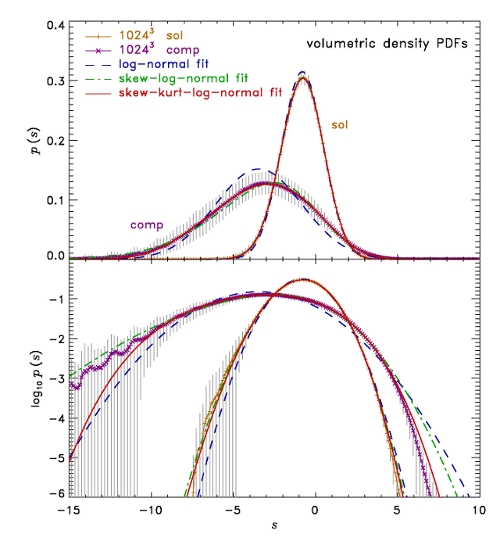| EPoS Contribution |
|
Star formation as function of turbulence driving
Christoph Federrath Zentrum für Astronomie der Universität Heidelberg (ZAH), Heidelberg, Germany | |
| The density distribution in molecular clouds sets the initial conditions for core and star formation within them. In particular, supersonic turbulence seems to play an essential role in shaping interstellar clouds, and determining the density distribution from which star formation proceeds. In previous non-gravitating, non-magnetised simulations of driven turbulence we showed that the density distribution strongly depends on characteristics of the turbulence driving. A dominance of compressive modes in the driving lead to 3 times higher standard deviations of the probability distribution function (PDF) of the mass density. It is important to note that the density PDF is an essential ingredient in most analytic star formation models to derive the mass distribution of cores and stars, and to predict the star formation rate of supersonic turbulence. Our recent high-resolution, three-dimensional simulations of driven self-gravitating turbulence show that the star formation rate is indeed more than one order of magnitude higher for compressive forcing than for solenoidal forcing. Thus, the forcing has a significant influence on star formation properties, which indicates that it should be taken into account in any successful theory of star formation. | |
 | |
| Caption:
Density probability distribution function (PDF) of the logarithmic density s=ln(rho/ | |
| Collaborators: R. Klessen, ZAH, Germany W. Schmidt, IfA Göttingen, Germany M.-M. Mac Low, AMNH New York, USA |
Key publication
Suggested Session: Cores and Collapse |

